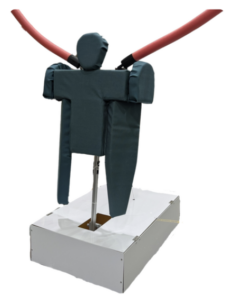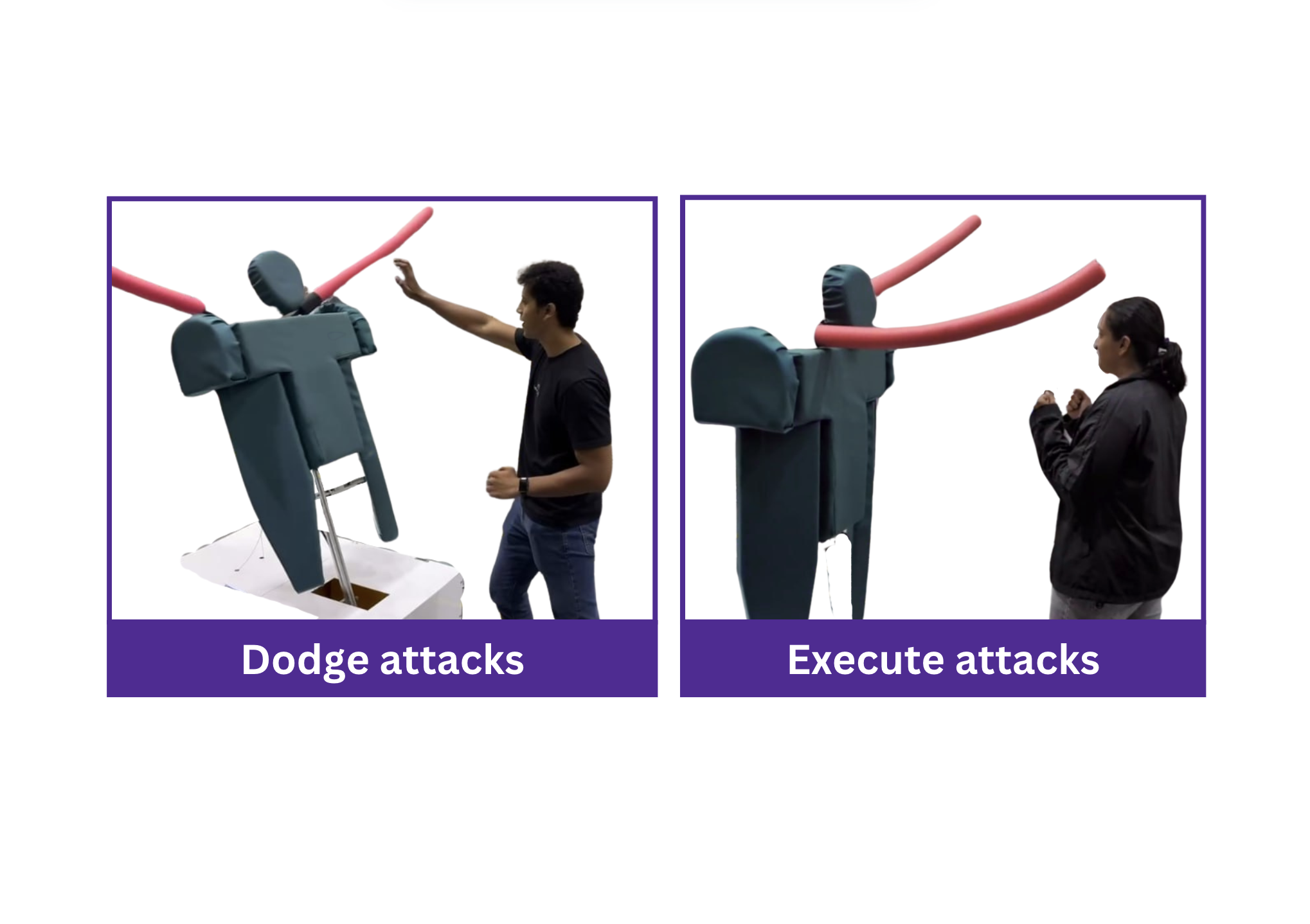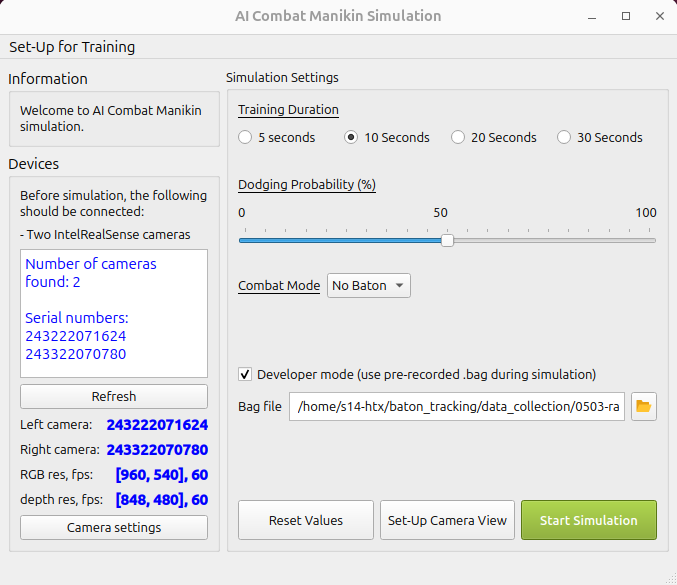PROBLEM & SOLUTION STATEMENT
Traditional combat training manikins lack adaptability and interactivity, limiting their effectiveness in preparing trainees for dynamic and high-pressure real-world scenarios
Enhance your training with a user-friendly application designed for dynamic, real-time combat practice. Trainees can engage with an intelligent, AI-powered manikin that responds to their moves — with or without a baton.
Key Features:
Realistic Interactions: The manikin dodges attacks and retaliates with counter attacks.
Computer Vision: The system understands the environment for accurate responses.
Predictive AI: The AI model anticipates trainee movements for lifelike training scenarios.
Train smarter. Train safer. Train with AI
OUR PRODUCT
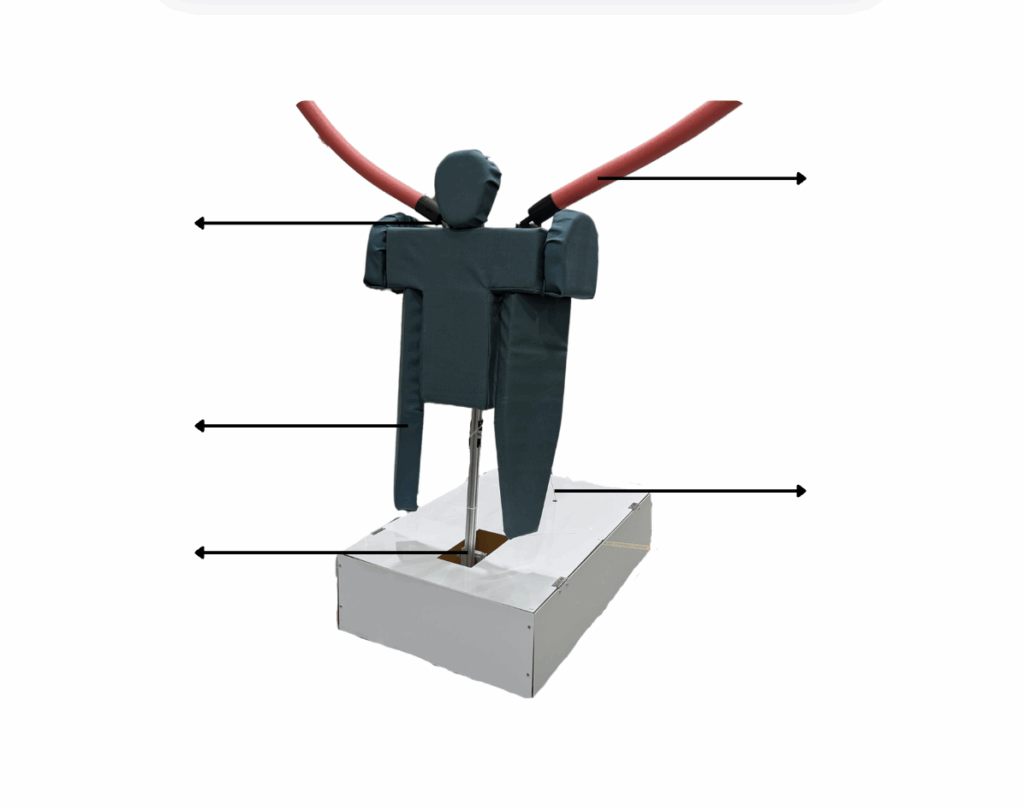
 Simulate realistic combat interactions while ensuring user safety. The mount is made of carbon fibre reinforced PETG plastic as it is heat resistant. Furthermore, the motor holder is at a 45-degree angle to simulate a downward strike.
Simulate realistic combat interactions while ensuring user safety. The mount is made of carbon fibre reinforced PETG plastic as it is heat resistant. Furthermore, the motor holder is at a 45-degree angle to simulate a downward strike.
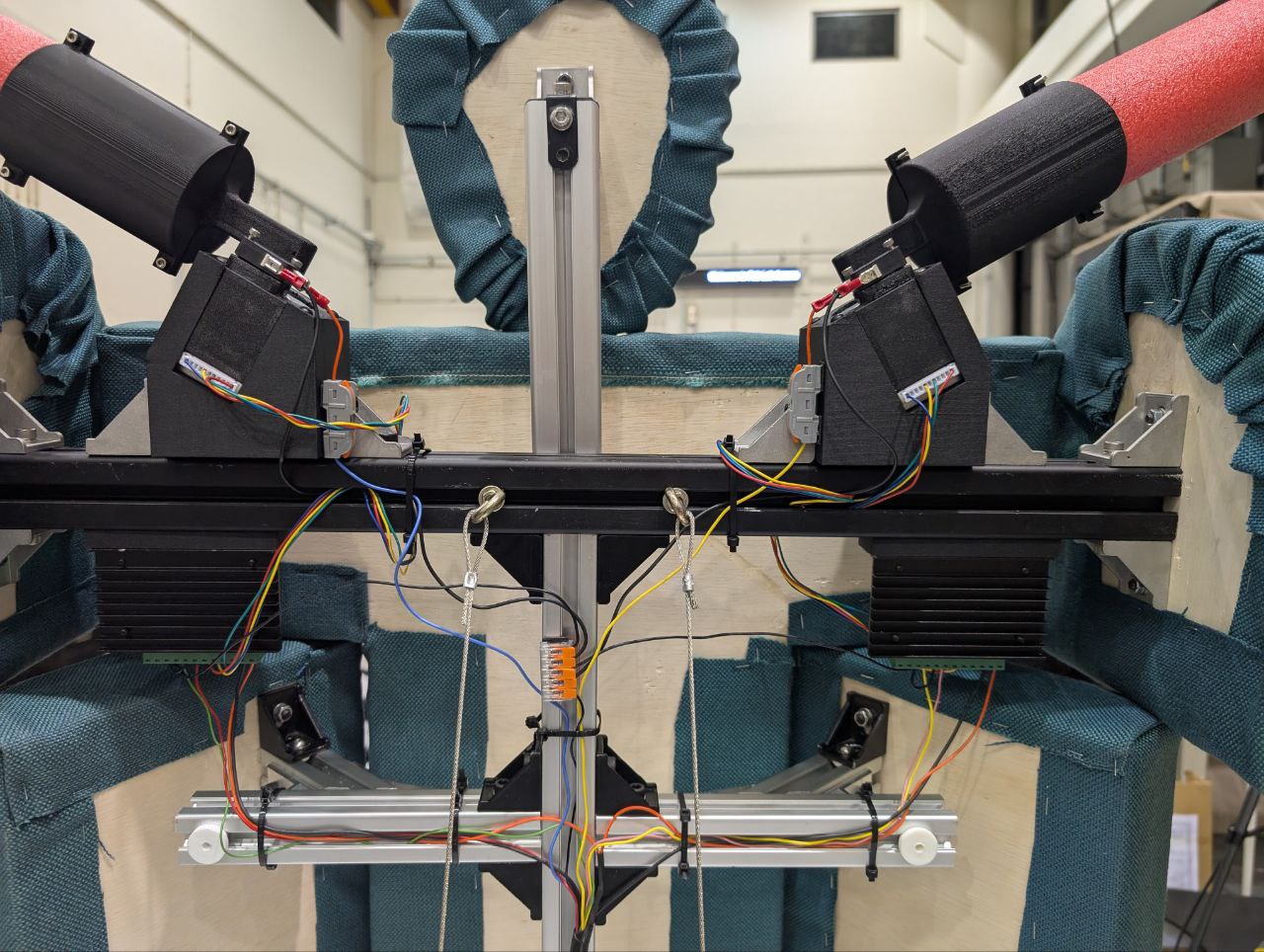 The motors are mounted onto the aluminium extrusion using a 90-degree aluminium bracket to hold it in place. The drivers are also mounted to the back to minimise noise through the wires.
The motors are mounted onto the aluminium extrusion using a 90-degree aluminium bracket to hold it in place. The drivers are also mounted to the back to minimise noise through the wires. Through rigours testing it was found that a sandwich of PU, EVA, and PU was the best combination for durability and sturdiness without injury when using hands to attack. A wood backing was added to allow for mounting.
Through rigours testing it was found that a sandwich of PU, EVA, and PU was the best combination for durability and sturdiness without injury when using hands to attack. A wood backing was added to allow for mounting.
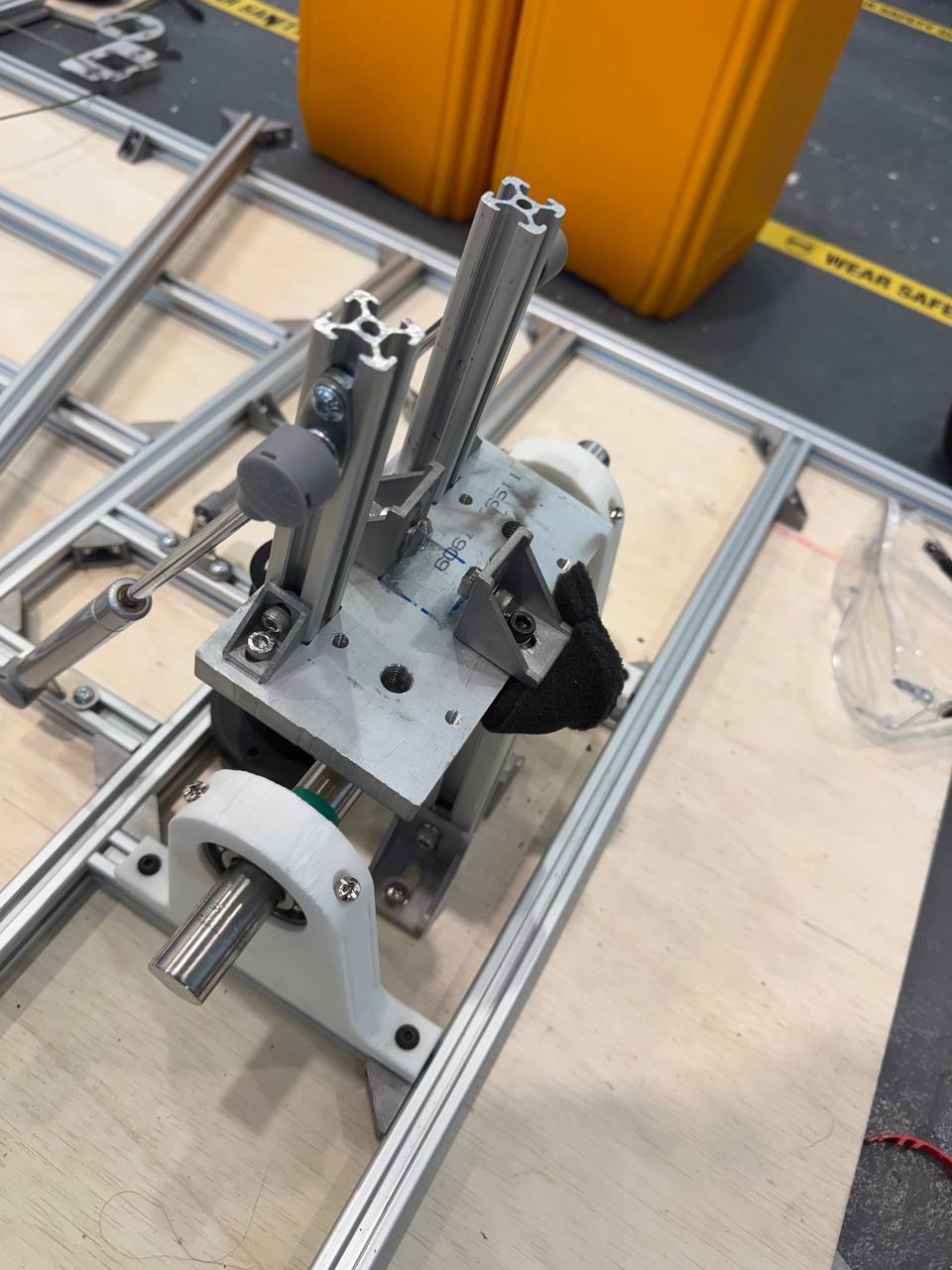 The base allows for restoration after retaliation by the manikin via two gas cylinders on either side with a spring at the rear which acts as a soft end stop.
Note: The image above was taken without the manikin attached.
The base allows for restoration after retaliation by the manikin via two gas cylinders on either side with a spring at the rear which acts as a soft end stop.
Note: The image above was taken without the manikin attached.
 The pulley system is powered by two motors at the rear end of the base. Both cables are tensioned allowing the manikin to stand up right. When the motors run it further spools the cable to simulate a dodge.
The pulley system is powered by two motors at the rear end of the base. Both cables are tensioned allowing the manikin to stand up right. When the motors run it further spools the cable to simulate a dodge.
HARDWARE
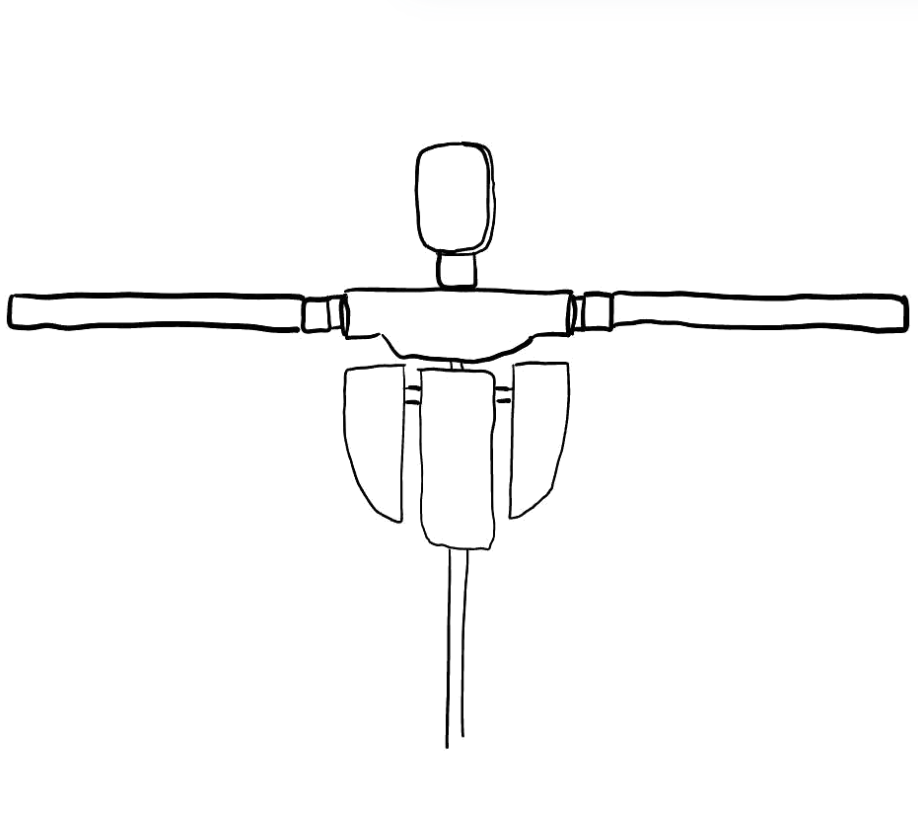
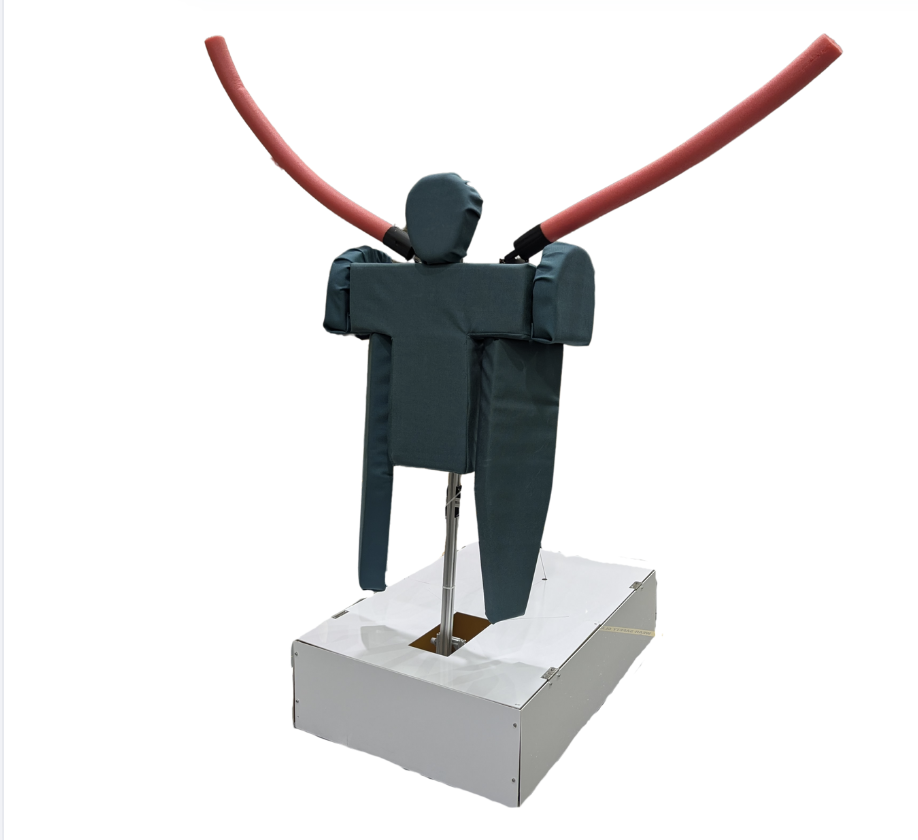
1. Development
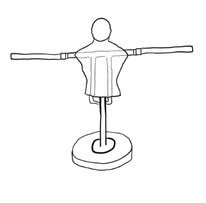
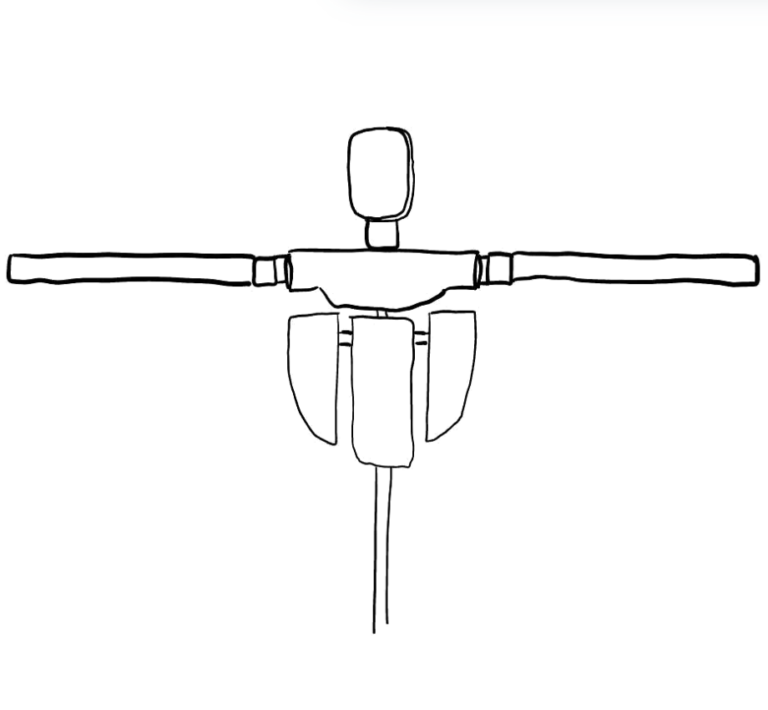
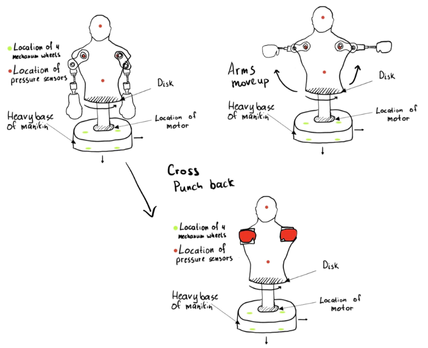
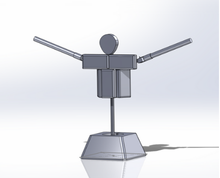
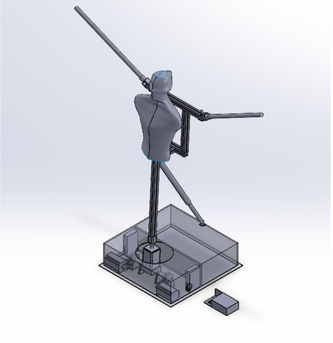
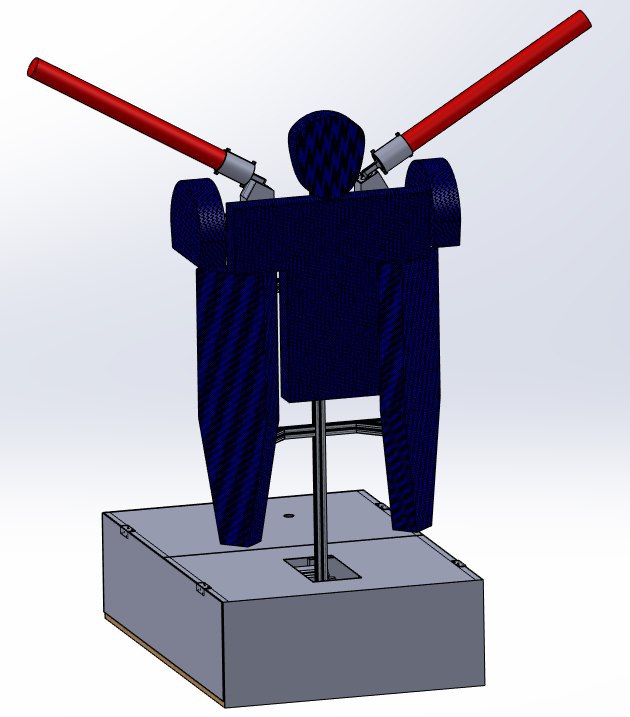
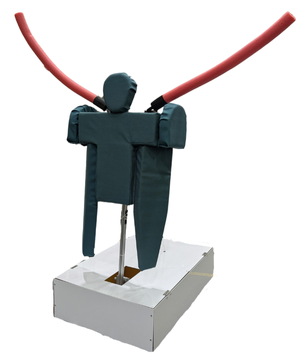
2. Actions
This section highlights the manikin’s ability to actively participate in training sessions—not just as a reactive target, but as an intelligent sparring partner. It features a responsive dodging system that simulates evasive maneuvers, and attack motions that challenge trainees with realistic, angled strikes. These capabilities are powered by a combination of mechanical and AI systems, creating a dynamic and immersive training experience that closely mimics real combat scenarios.
The manikin is designed to actively dodge trainee attacks in real-time. Using a system of tensioned cables, it performs swift backward dodges upon detecting an incoming strike. Gas springs then assist in smoothly returning the manikin to its original position within approximately 1 second. This reactive dodging mimics human evasive behaviour, providing a realistic sparring partner. A coil spring at the base also adds compliance, allowing the manikin to absorb force and maintain stability when struck, enhancing both durability and realism in training.
Beyond passive responses, the manikin can initiate attacks on the trainee. Its arms, mounted at a 45° angle, simulate angled strikes that resemble real combat scenarios. These strikes challenge the trainee’s reaction time, defensive positioning, and movement. The soft foam construction ensures safety, while still delivering a sense of impact. This active striking capability transforms the manikin from a simple dummy into a dynamic, interactive opponent for engaging solo combat drills.
SOFTWARE
1. User Interface
The below Graphical User Interface provides an interface for an easy set-up of the hardware devices and the simulation settings (Steps 1 – 3), as well as allows for a quick start-up of the training simulation (Step 4).
2. AI Models
No Baton Mode
To train using hand-to-hand combat.
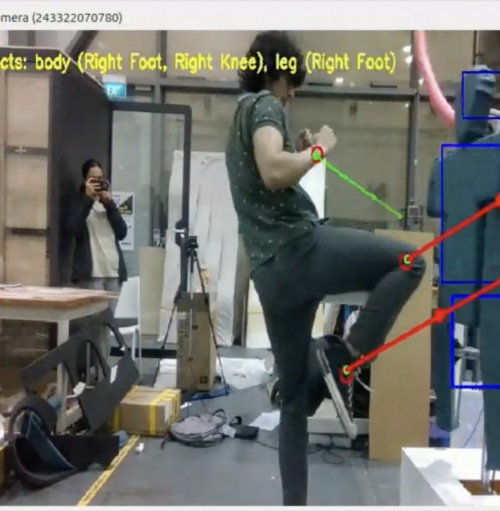
Using a kalman filter and smoothing function on MediaPipe’s pose estimation, the future positions and trajectory of the movements is predicted.
Baton Mode
To train using a defensive baton.
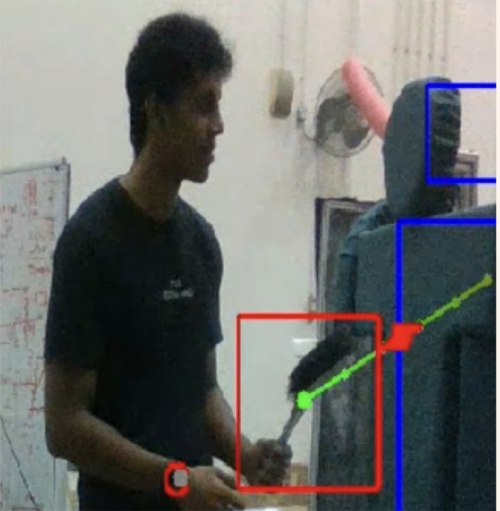
Using a FasterRCNN model, the baton’s position is predicted. This value is then used to predict the baton’s future positions and trajectory.
3. Decision Making Algorithm
Dodging
If predicted trajectory is intersecting with manikin hitbox area
% chance of activating (can be adjusted from simulation settings on GUI)
Attacking
Random % chance to trigger when manikin has been idle for some seconds
